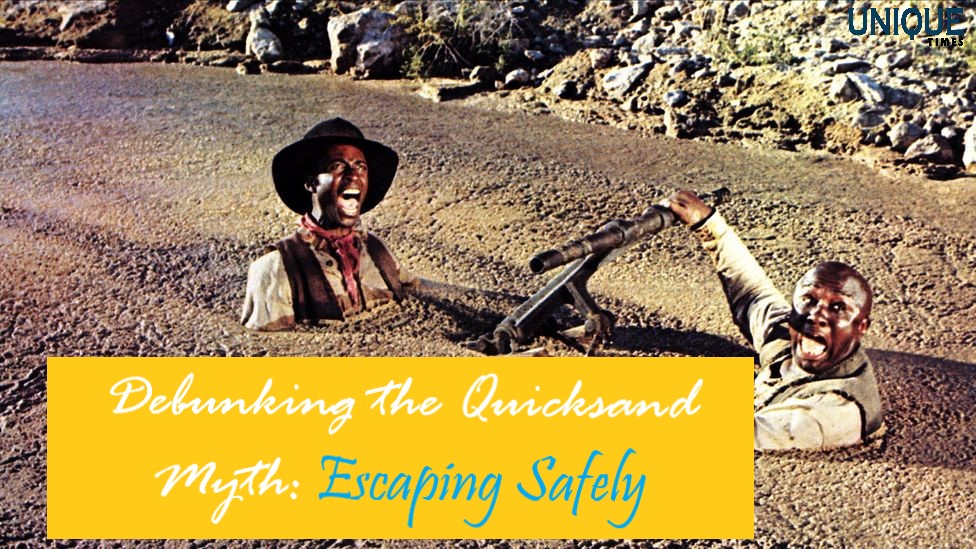Debunking the Quicksand Myth: Why Raising Your Legs Slowly Won’t Save You

Quicksand, often depicted as a treacherous and inescapable hazard in movies and stories, has captured our imagination for generations. One prevailing myth suggests that raising your legs slowly and laying on your back can prevent you from sinking into its depths. In this blog, we embark on a journey to uncover the truth behind this myth and explore the science of quicksand, dispelling misconceptions and revealing the reality of how to navigate this natural phenomenon.
The Myth of Slow Leg Raising: A Popular Misconception
The idea of slowly raising your legs to escape quicksand seems like a logical response to a dire situation. However, the reality is more complex, and understanding the properties of quicksand is essential to grasp why this strategy falls short.
Quicksand’s Quirks: A Closer Look at its Nature
Quicksand is a mixture of water, sand, and clay that behaves like a viscous liquid. Its density and viscosity create a unique environment where objects, including humans, can become trapped. Contrary to popular belief, quicksand is not a “trap” in the traditional sense, but rather a fluid with properties that challenge our assumptions.
The Physics of Quicksand: Debunking the Slow Leg Raise
The myth of slowly raising your legs assumes that quicksand is like a solid surface, where gradual movements could provide stability. However, quicksand’s properties make this notion ineffective. As you move slowly, the sand particles become agitated, causing the water to rise and decrease the sand’s buoyancy, leading to sinking.
Laying on Your Back: A Misguided Approach
Laying on your back in quicksand, another common misconception, can exacerbate the situation. The increased surface area creates more resistance against the sand particles, further promoting sinking.
The Right Approach: Navigating Quicksand Safely
In reality, the key to escaping quicksand lies in swift and strategic movements. Rather than slowly raising your legs, experts recommend moving your legs horizontally to create a larger surface area and reduce the sand’s density beneath you. This allows you to “float” on top of the quicksand rather than sink into it.
Staying Calm: The Mental Aspect of Escaping
Beyond physical actions, maintaining a calm mindset is crucial when dealing with quicksand. Panic can lead to rapid movements that increase sinking. By understanding the science behind quicksand and employing the right techniques, you can navigate this natural phenomenon safely and effectively.
Conclusion
Quicksand’s portrayal in popular media has led to numerous misconceptions, including the myth of slowly raising your legs to escape its clutches. By dispelling this misconception and understanding the properties of quicksand, we empower ourselves with knowledge that can make a critical difference in challenging situations. Remember that staying informed, keeping a clear mind, and employing accurate techniques are the keys to successfully navigating through quicksand’s unique properties and ensuring your safety.
Picture Courtesy: Google/images are subject to copyright








